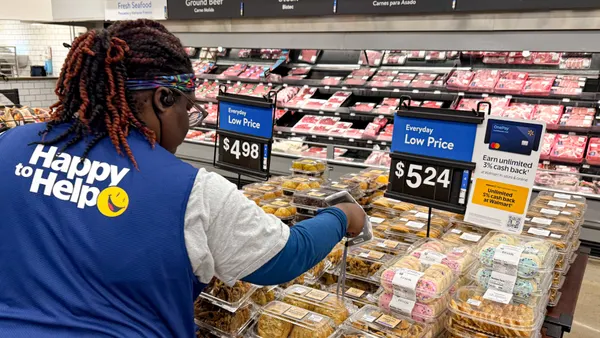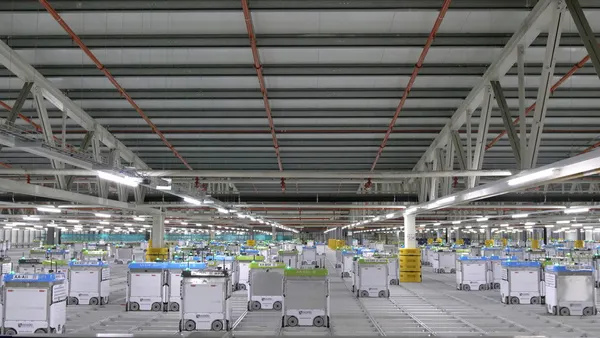Dive Brief:
- Publix plans to boost its capital expenditures to $1.6 billion in 2020, according to the company’s recent 10-K filing — a 40% increase over last year’s total. The grocer plans to funnel spending into new supermarkets, remodels, information technology hardware and software and buying up shopping centers anchored by company stores.
- Publix reported a comparable store sales increase of 3.6% during the fourth quarter of 2019, while net sales during the period increased 5.4%, to $9.8 billion. The grocer’s net sales for 2019 totaled $38.1 billion, up from $36.1 billion in 2018, while comparable store sales for the year increased 3.6%. Net sales for 2019 were up 26.3%, to $3 billion.
- The Lakeland, Florida-based company’s stock price increased from $47.10 to $48.90 per share, effective March 1. Publix’s stock is not publicly traded and is only available to employees and executives.
Dive Insight:
Publix is increasing its capital expenditures in a big way after three years of lowered spending, indicating the company wants to press its advantage in Florida and possibly accelerate expansion along the East Coast.
The grocer chased two recent entrants out of its home state — Lucky’s Market and Earth Fare — and is building out its small-format Greenwise stores, which offer an assortment of natural and organic groceries and fresh meals geared mainly toward younger consumers. Publix reignited Greenwise as a firewall against the specialty chains that have rushed into the state, but the banner could take on a life of its own, with four locations now open and 12 announced. Publix recently agreed to buy five stores from Lucky’s Market that fit the size profile of Greenwise stores, with locations in Naples, Neptune Beach, Clermont, South Orange and Ormond Beach.
The chain is testing a prototype store in markets like Sarasota and Tampa Bay that brings the deli to the center of the store, expands produce and adds in-store seating along meal stations and self-checkouts. Publix is also remodeling its legacy stores to include meal options like salad bars and grab-and-go foods, add in services like pharmacy and in some cases a separate liquor store.
A coveted shopping center anchor, Publix has continued to buy out these developments and its stores in order to generate revenue and keep competing grocers at bay. Between 2007 and 2017, the company’s ownership of its stores jumped from 11.2% in to 31.8%, according to a Palm Beach Post analysis.
As it moves up the East Coast, Publix is laying the groundwork for a prolonged attack. Last week, the company broke ground on a distribution center in Greensboro, North Carolina. Slated for phase-one completion by 2022, it marks the company’s 10th distribution warehouse and its northernmost facility, and will be able to more efficiently supply refrigerated goods to the companies stores in the Carolinas and Virginia. Publix currently operates 123 stores in these three states.
Publix is also expanding its e-commerce services. In January, it became the first grocer to roll out a fresh meal delivery program engineered by Instacart. The program, which was folded into the Publix app, includes a digital deli counter that allows customers to personalize their own Publix subs. The company capitalized by offering a week-long sale on pub subs last month.











